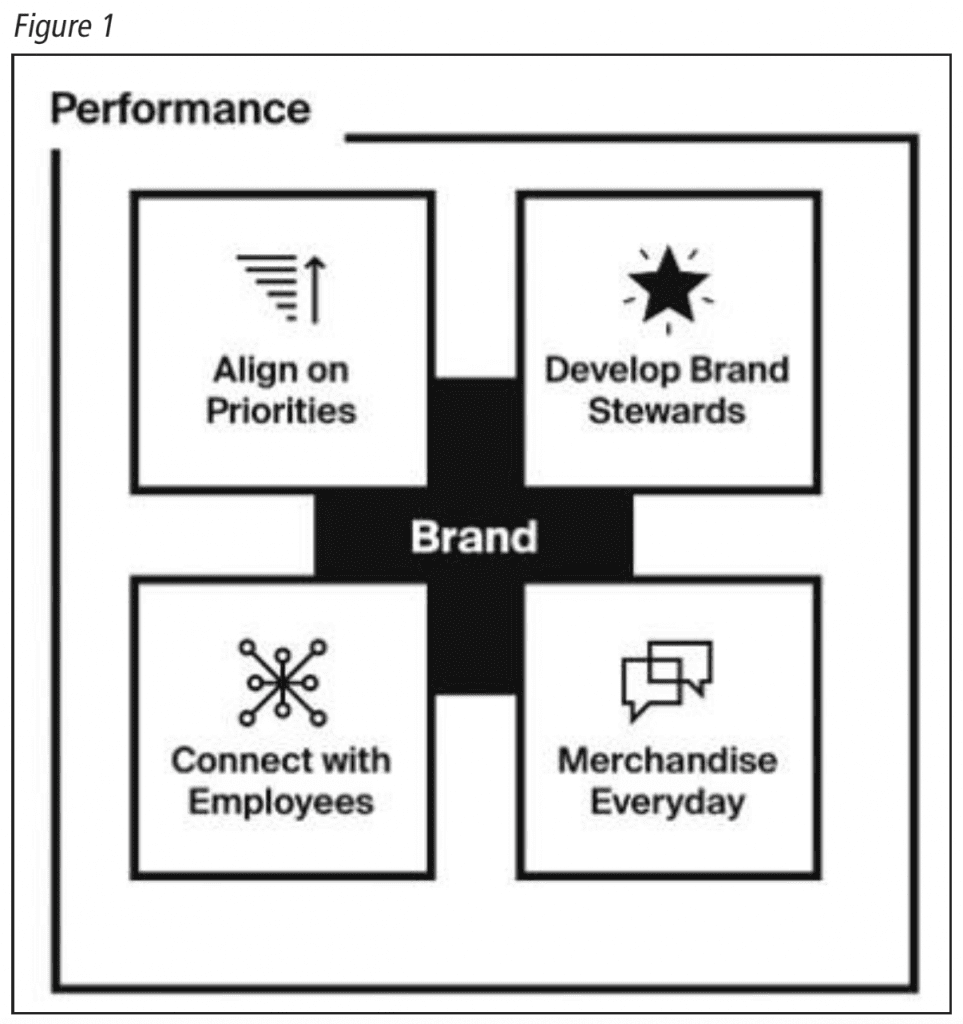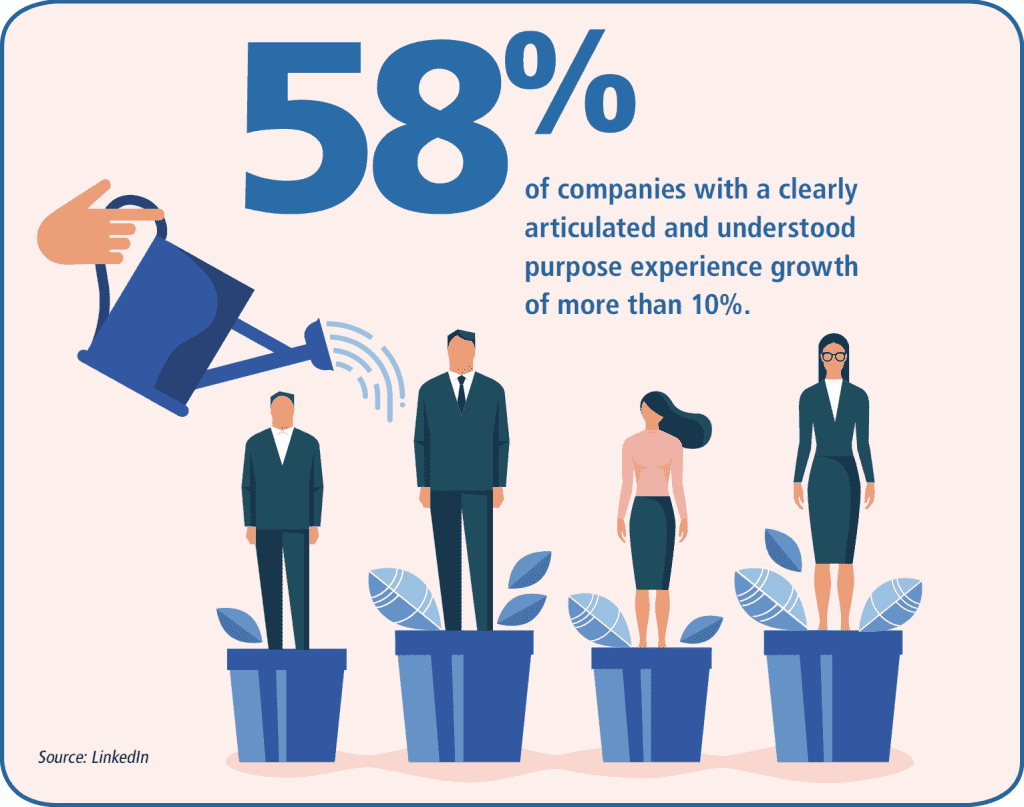Strategies to maintain and grow employer brand equity through uncertain times.
By Yasmeen Coning
What does it mean to be an employer of choice? In the simplest of terms, it translates to offering amazing work benefits, opportunities for growth and success, and, most importantly, a cohesive and meaningful culture that inspires people to reach for their personal best. However, achieving and sustaining that premium status in a somewhat unstable market is no small feat. There are bound to be ups and downs over time. Just because a company is experiencing layoffs or may not be actively recruiting does not mean employer branding is put aside. Employer brand strategy must be steadfast and always-on to survive.
When it comes to being seen as an employer of choice, no two companies are alike. This means that not every company is a match for all prospective candidates. For example, Facebook is an employer of choice and describes its culture as bold and open. This works well for self-starters who can move fast and find their way. However, it may not be a fit for someone who thrives in a more nurturing, structured environment based on mentorship, education, and training. Bold and nurturing environments are respectively and equally fantastic, and foster benefits for different personas. Not everyone will thrive in one or the other.
 It is important to stay true to purpose and values to consistently remain appealing, even when proactive recruiting programs are not full speed ahead. There are four pillars that companies need to explore to maintain a standout employer brand that weathers the ups and downs across industries, environmental factors, market volatility, and much more. These pillars impact performance and include:
It is important to stay true to purpose and values to consistently remain appealing, even when proactive recruiting programs are not full speed ahead. There are four pillars that companies need to explore to maintain a standout employer brand that weathers the ups and downs across industries, environmental factors, market volatility, and much more. These pillars impact performance and include:
- align on priorities;
- develop brand stewards;
- connect with employees; and
- merchandise every day (see Figure 1).
Align on Priorities
It is easy for leaders across functions to slip into a departmental view when it comes to team cultivation strategies. While each area has a specific responsibility spanning finance and accounting, sales and marketing, operations, IT, and more, alignment on the greater organizational philosophy pertaining to culture, values, and employee purpose must support the overall business strategy. This helps the business grow and execute efficiently.
With that said, it is crucial that leadership shares the same vision for talent acquisition and retention across the organization. Successful alignment involves an in-depth analysis of current and anticipated conditions that influence the employer brand purpose, as well as the impacts on the company’s ability to deliver on its promise.
For example, a recession is an economic condition. If the economy enters a recession or slow down, the demand may also slow for certain products and services. Leadership needs to assess the impact on the business from a revenue standpoint and may need to determine if they want to hold on hiring or use this time to invest and hire in a certain sector for innovation and product development.
Another example is the shift to online shopping. Leadership needs to align on the investment in brick and mortar stores over online growth and how that impacts staffing. Is there a reduction in workforce or do they redistribute talent and retrain for a more digital landscape?
The resulting direction must then be passed to managers at every level for seamless execution of talent-centric programs. Alignment determines the organization’s long-term objectives and establishes the goals necessary to achieve them. Without it, the employer brand loses its ability to drive outcomes.
Develop Brand Stewards
Influencing from within is a powerful methodology for keeping employees excited about their work and connected to the brand. Peer-driven communication and validation have an organic authenticity that is difficult to recreate. They have lasting, positive effects that can stand the test of market and environmental volatility. When companies have strong internal brand champions, their voice and enthusiasm can act as the connective tissue that helps organizations weather downturns like COVID-19, when workforce reductions are a necessary reality.
Just as external-facing brand champions can showcase brand value to customers, employees can achieve top-of-funnel brand awareness internally around goals, purpose, values, and benefits through the leadership of brand stewards. When employees truly live the brand, they can be a fantastic and positive reminder of the longer-term vision for the company and a great support to each other. Brand champions are also a great example of promoting trust, which is a key factor in a strong employer brand. People want to know that they work for a company that authentically has their best interests in mind, even when times get tough. Giving employees a toolkit to talk about their work, their connection to a common purpose, and the impact they are making can be the most powerful form of marketing and recruitment, regardless of the market conditions.
Connect with Employees
Creating experiences that involve and empower all employees goes a long way. A collaborative and interactive relationship between employers and employees is key to becoming a desirable place to work. Tangible experiences that speak to company values and purpose are what allow the brand tenets to come to life.
For example, Nestlé champions creating shared value through diversity, innovation, and respect. Considerate of their global presence, Nestlé encourages and celebrates locally driven initiatives that are representative of regional progress and the specific teams that are advancing Nestlé values and goals. For example, the Nescau Strong Girls campaign that came out of Brazil is featured as a win for gender equality advancement on the Nestlé global site. Tailoring recognition to local contexts effectively speaks to a respect for the individualized challenges different teams are tasked to overcome.
Innovation initiatives like the Nescau campaign are also engaged through the “Creating Shared Value Forum,” in which people from around the world are brought together to stimulate thinking about the increasingly important role of business in addressing major socioeconomic challenges. At the forum, the Nestlé CSV Prize is awarded to help expand an initiative that addresses nutrition, water, and rural development.
Experience-based involvement coupled with core ideas makes concepts memorable, increases education and learning, and fosters professional growth.
Ensuring that employee experiences are ongoing and that the community is talking about these positive interactions via social channels consistently shows employer value. This rings true even if reductions in workforce are happening or hiring is on hold. These strategies can be scalable and ensure that targeted talent understands that the enterprise supports its people and their growth.
Merchandise Every Day
Often, brands work diligently to build a robust narrative, purpose, and value for employees. However, far too often, there is not the same effort or investment when it comes to telling that story to key audiences internally and externally on an ongoing basis. It’s essential to proactively merchandise employee benefits consistently, not just make it a moment in time.
Organizations should proactively market their brand each and every day across channels and amplify the messages and values that make them different to prospective talent.
World food company Danone owns and merchandises their unique employer brand by beginning their employee journey from the second a prospective hire comes across their content. For example, a recent post on Danone’s Facebook page features an employee’s breakfast with the caption: “Meals don’t have to be complicated or fancy in order to be nutritious and delicious! Amanda B, our senior manager of scientific affairs and registered dietitian, is showing us how to take our yogurt and smoothie bowl skills to the next level. Share pics of your best, most delicious work -and tag us!”
By integrating employee perspectives into external-facing conversations, Danone offers a holistic brand experience, one that makes a casual job seeker think this company seems like a family and this company could be a home.
From simple social media posts to friendly, engaging, and transparent career site content, Danone ensures that the image it sets forth of its culture is one that attracts the high-priority talent it seeks.
Danone’s employer brand is merchandised in the little things, such as branding its careers page for “candidates” instead of job seekers, as well as through big moments like providing a comprehensive page detailing “Life at Danone.”
Amplifying company purpose and a steady, outward narrative of team support and success, even when a brand may not be hiring, sends a message that the organization is thinking of its people and that it values every individual contribution. Steady campaigning and marketing year-round keeps the brand top of mind and desirable for recruitment, while also boosting internal team morale.
Additionally, HR leaders should allow employees to internally amplify why they enjoy their work and celebrate accomplishments across external channels and platforms. Again, this tells the market that a company values its people and appreciates their contributions.
Taking a close look at each of these four areas helps a company become an employer of choice for the long-term and sustain success through the ups and downs of the market, environmental factors, and the current pandemic state. More importantly, this approach makes sure that the values of employers and employees match, which is the key to success for all. When an employee has matched values, believes in the purpose, and lives the brand, individual performance increases. In fact, according to a LinkedIn study, 58 percent of companies with a clearly articulated and understood purpose experience growth of more than 10 percent, and 73 percent of purpose-oriented people are satisfied in their jobs.
When employee and team performance see a positive impact, it ladders up to a company’s overall growth and success.
With that said, it is vital to invest in employer brand cultivation and often, it is most critical during times when growth may be stifled. For example, during COVID-19, product sales across verticals are down, but many brands have not stopped telling consumers about their great product benefits. The same thinking applies to employer branding. This approach shows that the enterprise is aligned on purpose and people first. When this story is told every day by a brand’s own employees, a strong employer brand can stand the test of time.
Yasmeen Coning is group director of employee engagement for Siegel+Gale.














